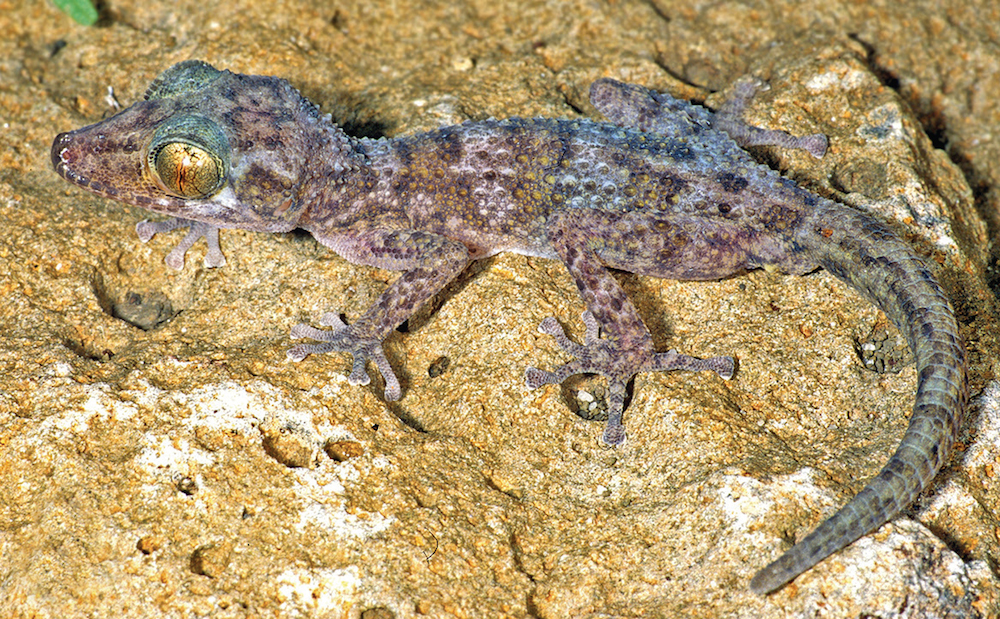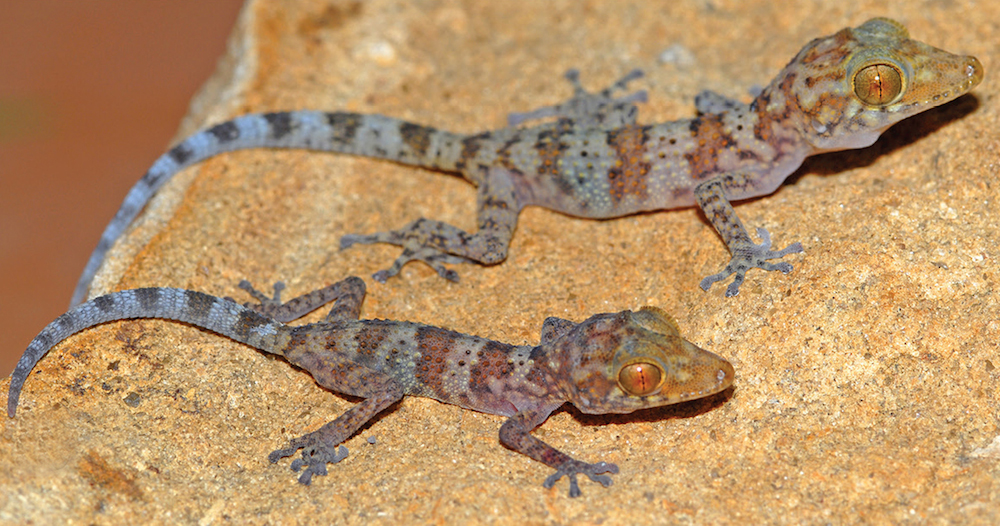New Nocturnal Gecko Species Discovered in Madagascar

A new species of gecko has been found living among the crumbling remains of an old French fort in northern Madagascar. The gecko, nocturnal by nature, is a master of camouflage and seamlessly blends in with the surrounding rocks and fortress ruins, according to a new study.
Although researchers first found the new gecko species (Paroedura hordiesi) in 2004, when they spotted a male with a broken tail, a new genetic analysis and a close examination of its physical features now show that it is a distinct species.
After the scientists found more of the geckos around the French fort, they reported that the new species could measure up to 2.3 inches (5.8 centimeters) from their nose to the base of their tail. The creatures have long tails that can measure nearly the entire length of their bodies, up to 2.1 inches (5.3 cm). [In Photos: The Wacky Animals of Madagascar]
The geckos also have square-shape adhesive pads on their toes, a feature that is unique to Paroedura geckos, and the related gecko genus, Ebenavia, the researchers said.
The newfound species has a relatively small habitat, spanning just 19 square miles (50 square kilometers). But the gecko is not alone in its territory — in the past few years, researchers have identified other new reptile species at the Montagne des Français Reserve in northern Madagascar, including new tree frogs, leaf chameleons, lizards and snakes.

It's likely that other unknown reptile species live in this portion of the region's limestone mountains, called a massif, the researches said. But many of the animals native to the area could be threatened by habitat destruction, they said.
In fact, the researchers asked that the new gecko species be classified as "Critically Endangered" on the Red List of Threatened Species, which is maintained by the International Union for Conservation of Nature, an international organization that tracks the status of animals, plants and fungi around the world.
Sign up for the Live Science daily newsletter now
Get the world’s most fascinating discoveries delivered straight to your inbox.
"The new Paroedura species from Montagne des Français described in our paper is just one new contribution to the taxonomic inventory of this massif, which is believed to hold yet undiscovered diversity," researcher Frank Glaw, from the Bavarian State Collection of Zoology, said in a statement. "This discovery also highlights the threats affecting this microendemic species and other biota in the region."
Although the geckos live in a protected reserve, their immediate habitat is separated from others by steep inclines known as "habitat islands," the researchers said. Several taxa, including dwarf frogs (Stumpffia), dwarf chameleons (Brookesia), burrowing skinks (Paracontias), leaf-tail geckos (Uroplatus) and the genus of the new geckos (Paroedura) have grown independently of animals in other habitat islands, allowing each island to become a hotspot of biodiversity.
The Paroedura genus is widespread throughout Madagascar's ecosystems, including the eastern rainforest, western dry forest, arid thornbush savanna and high mountain habitats.
The study was published Nov. 5 in the journal Zoosystematics and Evolution.
Follow Laura Geggel on Twitter @LauraGeggel and Google+. Follow Live Science @livescience, Facebook & Google+. Original article on Live Science.

Laura is the archaeology and Life's Little Mysteries editor at Live Science. She also reports on general science, including paleontology. Her work has appeared in The New York Times, Scholastic, Popular Science and Spectrum, a site on autism research. She has won multiple awards from the Society of Professional Journalists and the Washington Newspaper Publishers Association for her reporting at a weekly newspaper near Seattle. Laura holds a bachelor's degree in English literature and psychology from Washington University in St. Louis and a master's degree in science writing from NYU.









